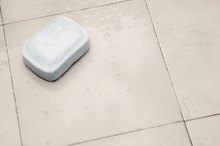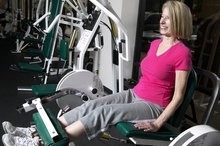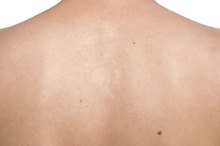How to Build Strength After Cellulitis
Cellulitis is a bacterial infection usually caused by the streptococcal germ, according to the National Institute of Allergy and Infectious Diseases. Cellulitis affects the subcutis, the deepest layer of the skin, and typically manifests as the result of streptococcus entering through a scratch or cut. Most cases of cellulitis occur on the lower legs, according to the MayoClinic.com, although the infection can happen anywhere on the face or body. Treatment most likely will involve oral antibiotics, depending on the severity of the infection.
Speak to your doctor or health care practitioner and let him know that you intend to return to your exercise routine to regain your strength. Make sure you receive medical clearance before you engage in any form of physical activity.
What Is the Difference Between Cellulitis & Mrsa?
Learn More
Finish the entire round of antibiotics before you return to exercise. Even though cellulitis symptoms typically clear up in a few days after taking antibiotics, follow your doctor’s recommendations regarding how long to the take the medication. Typically, a round of antibiotics following a cellulitis outbreak covers 14 days, according to MayoClinic.com.
Depending on the location of the cellulitis, begin with light exercise such as cardio in short intervals of 10 to 15 minutes. Cellulitis can reoccur, according to the National Institute of Allergy and Infectious Diseases, so watch for signs of re-infection, such as swelling, pain, redness, tenderness, fever and chills.
What Is the Difference Between Cellulitis & Mrsa?
Learn More
Begin strength training using light weights and focus only on upper body exercises if the cellulitis occurred on your legs. If the cellulitis occurred on your face or upper body, begin strength training using lower body weight machines. Keep the weights light and gradually work up to your normal load over several weeks.
Strengthen your legs using your own body weight to begin with, if the cellulitis struck in your lower leg region. Effective exercises include step ups, free squats and lunges. After two weeks, begin adding light hand weights.
Tips
Take steps to avoid cellulitis whenever a break in your skin occurs. Preventative measures include washing the wound with soap and water daily and applying a topical antibiotic ointment.
Warnings
Diabetics and those who suffer from poor circulation need to pay extra attention any time a skin wound occurs, according to the MayoClinic.com. Regularly inspect your feet and legs for signs of injury, and immediately treat even seemingly innocuous skin infections like athlete's foot.
Related Articles
References
Resources
Writer Bio
Emma Cale has been writing professionally since 2000. Her work has appeared in “NOW Magazine,” “HOUR Magazine” and the “Globe and Mail.” Cale holds a Bachelor of Arts in English from the University of Windsor and advanced writing certificates from the Canadian Film Centre and the National Theatre School of Canada.







